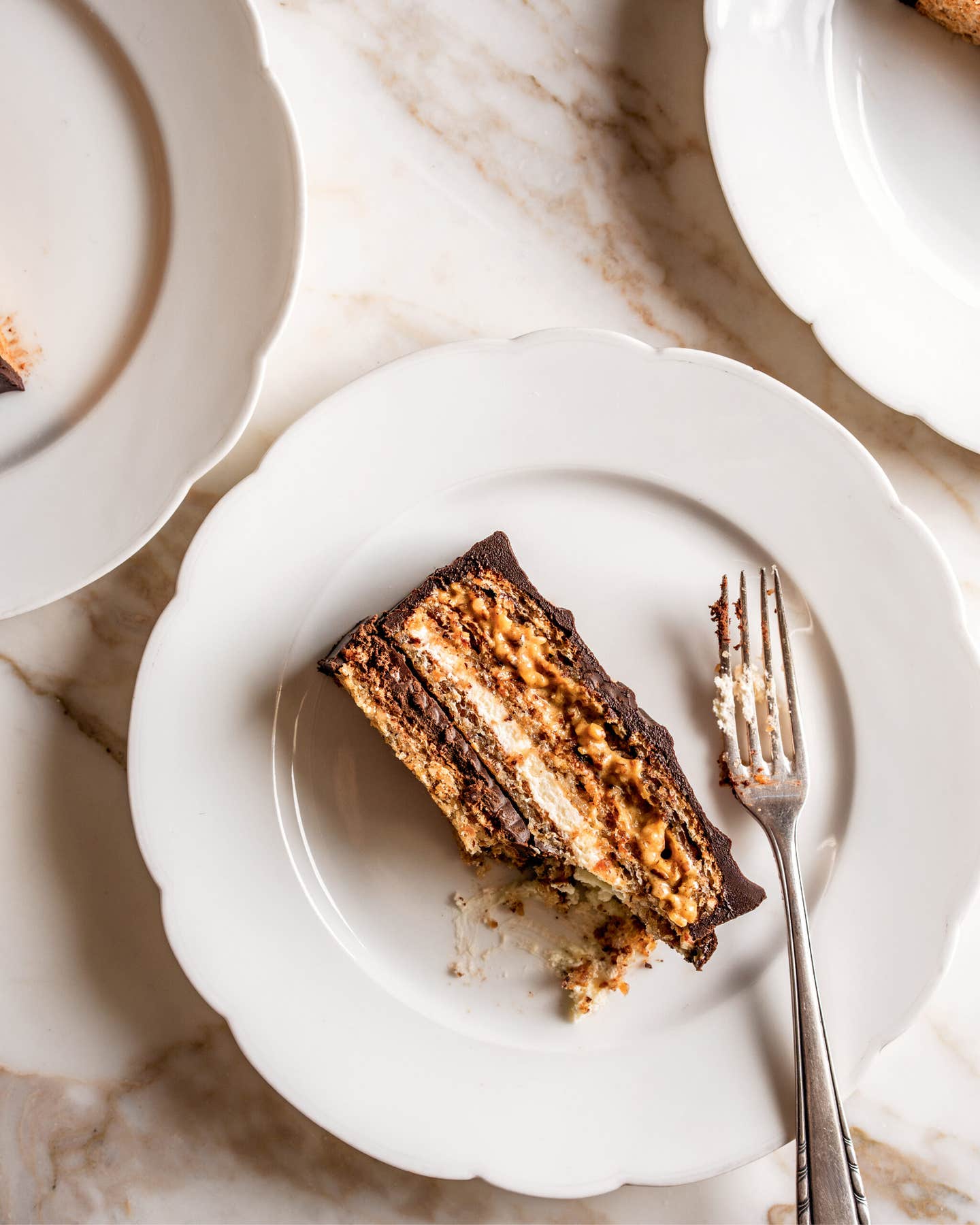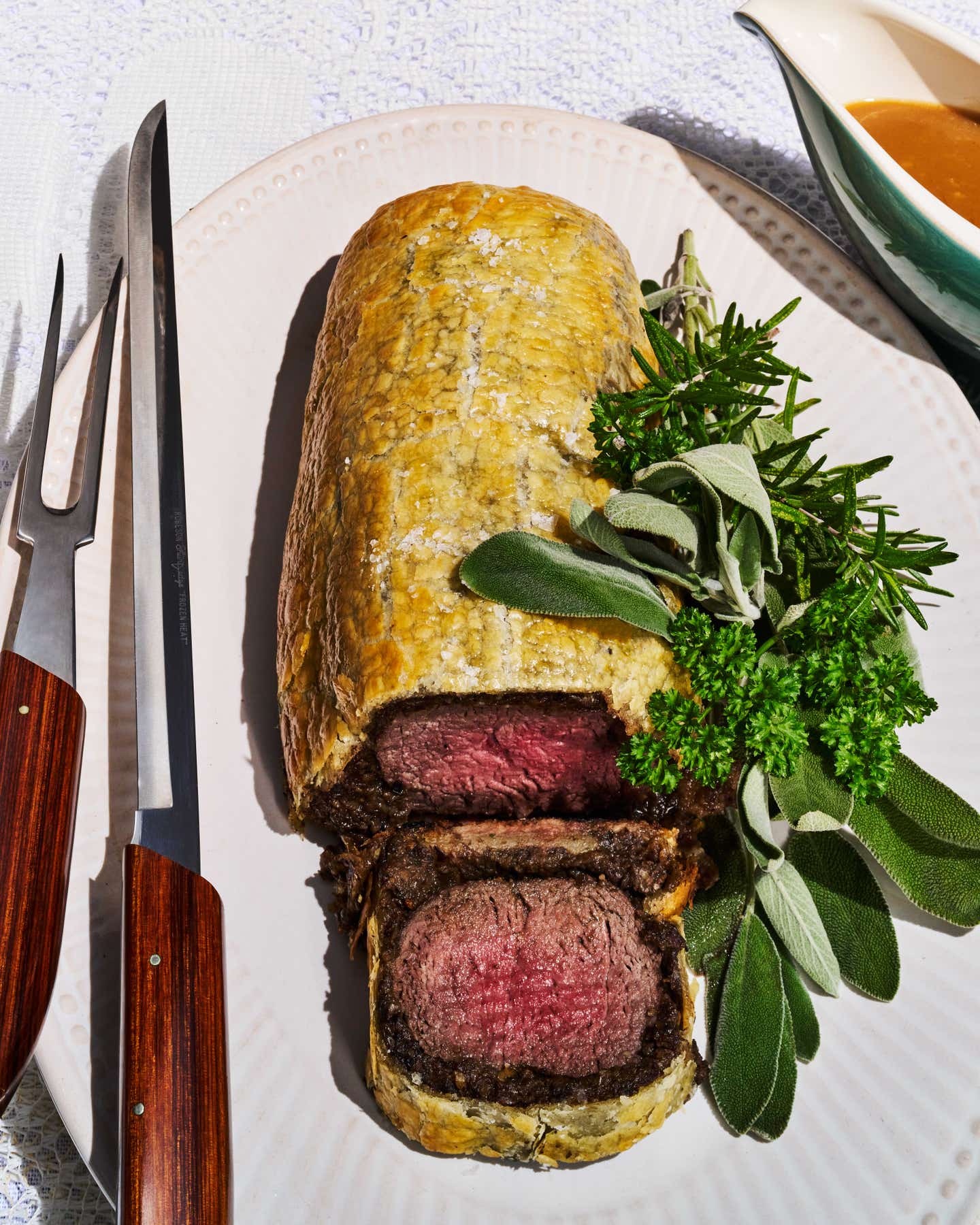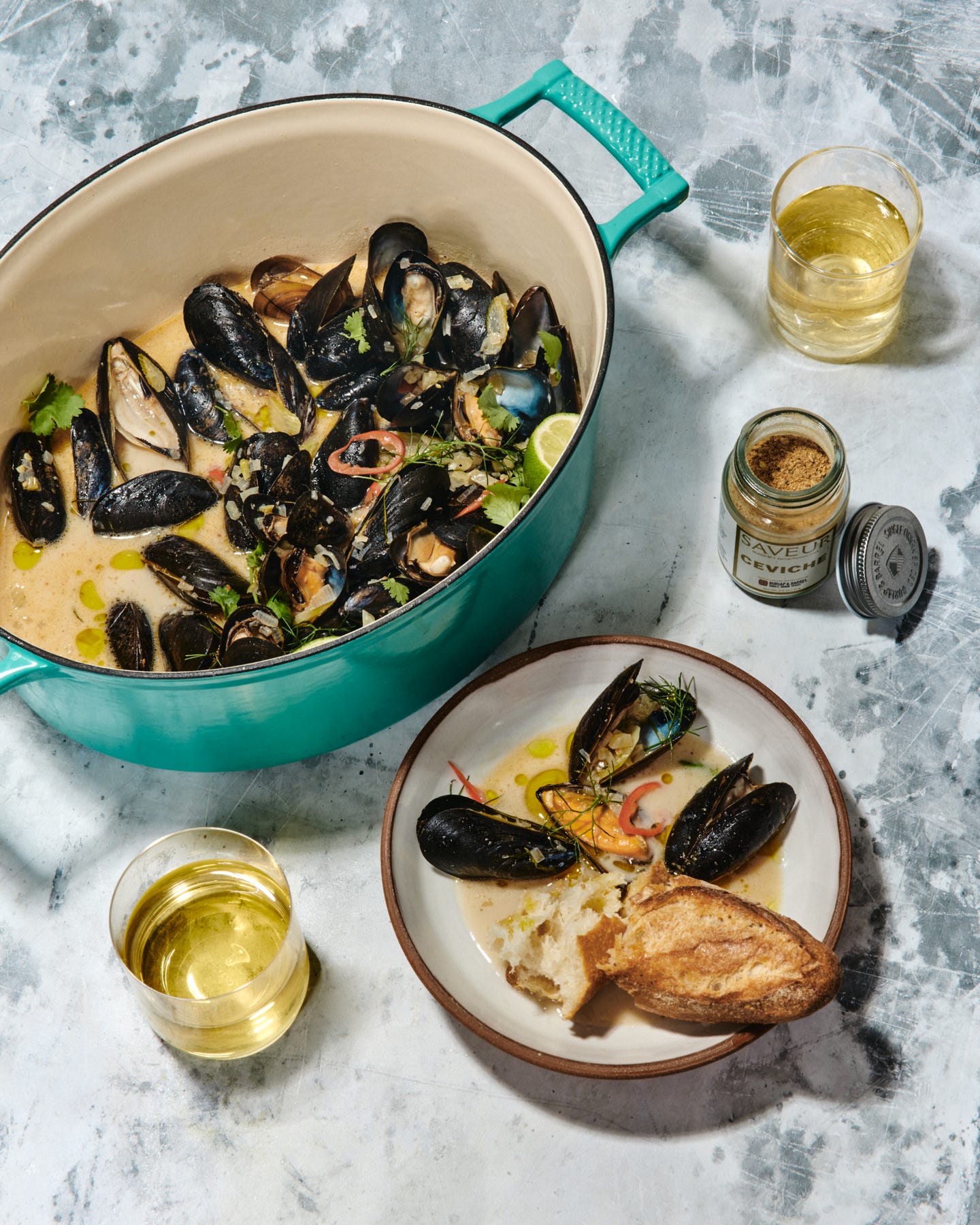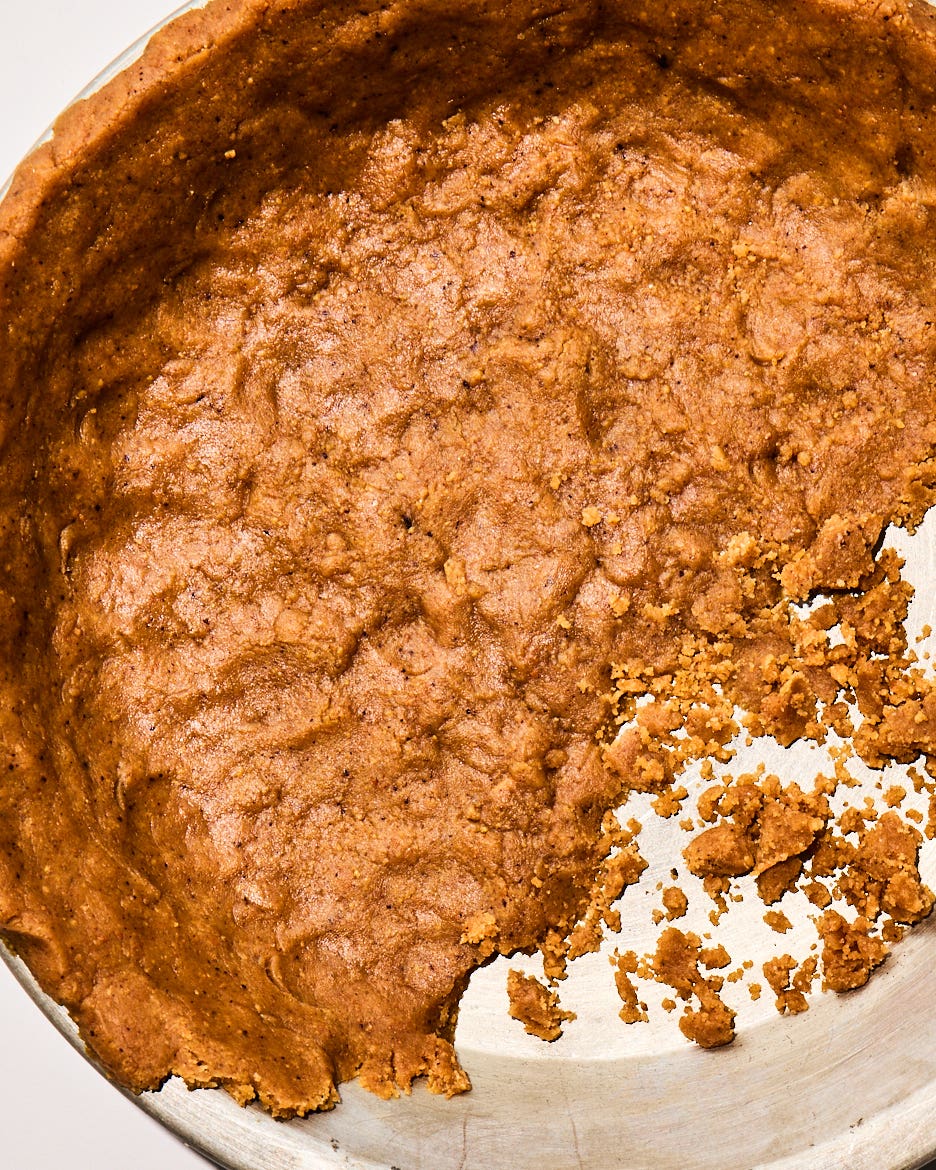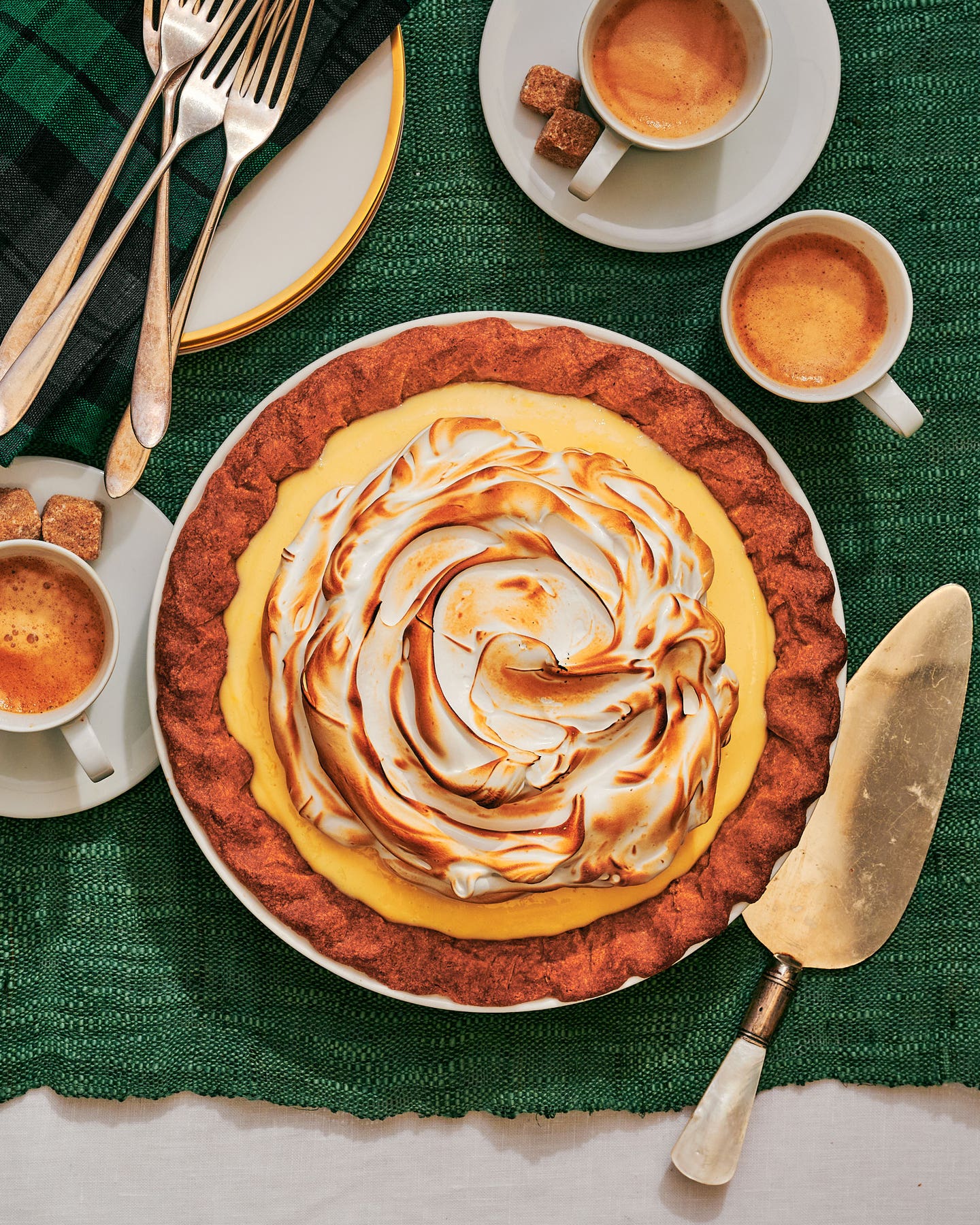Atayef (Walnut- or Clotted Cream-Filled Pancakes)
For Arabs from the Levant, “this dish, more than any other, represents Ramadan,” writes chef Reem Assil.
- Serves
makes 24
- Time
3 hours
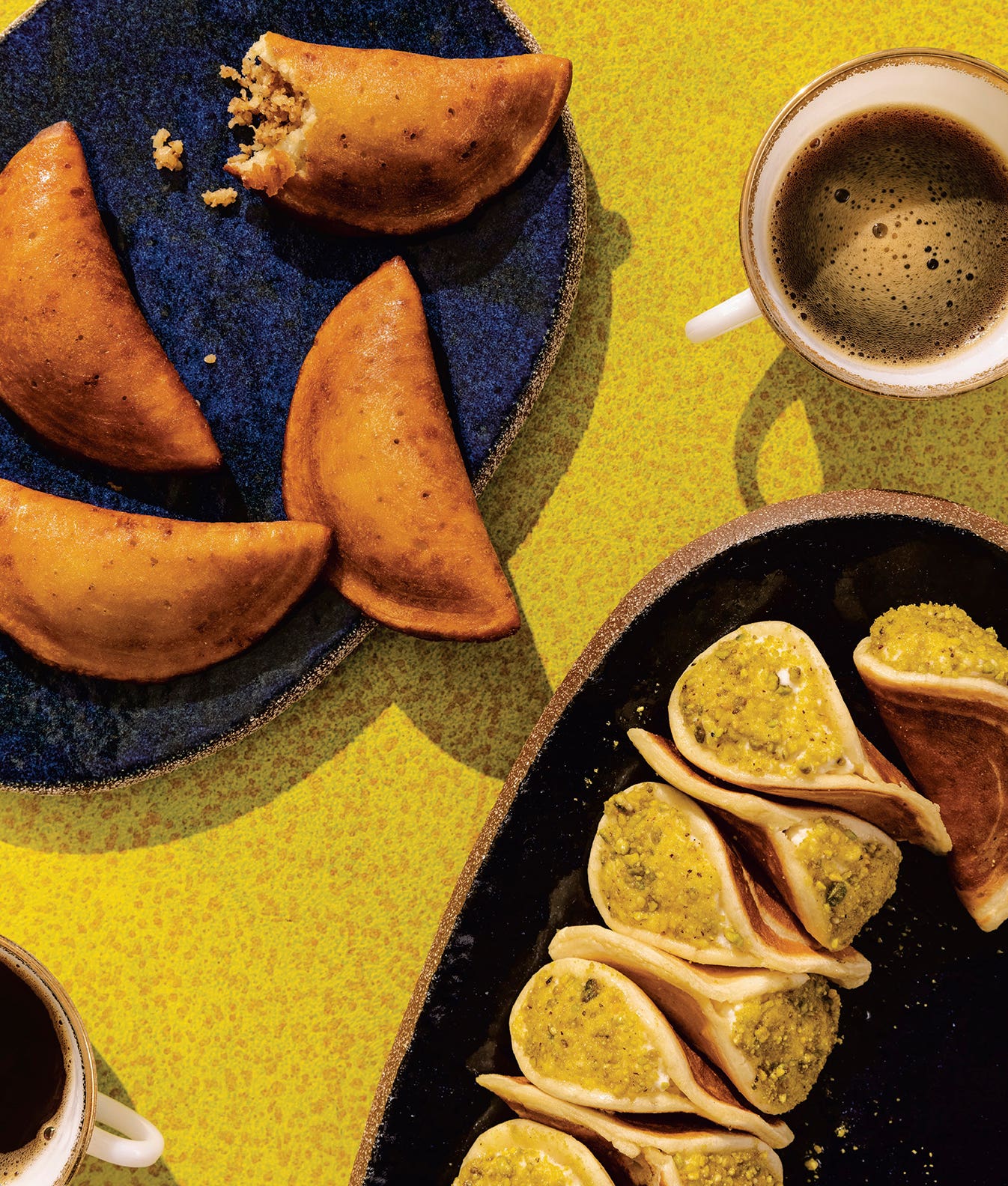
Whatever else may have been happening in our lives, when it came time to celebrate the holy month of Ramadan, we could always count on having atayef. We made the festive little pancakes two ways: stuffed with nuts, folded, fried, and served hot; or pinched into cone-shaped pockets and filled with ashta—chilled, sweetened clotted cream—and pistachios. Unless, that is, my youngest sister, Manal, happened to be nearby. She loved to pull the atayef straight from the pan and pop them into her mouth before they could even reach the pot of oil for frying or the fridge for cooling.
When I exchange stories with other Arabs from the Levant, this dish, more than any other, represents Ramadan for us. Cooked on only one side, and porous with perfect, tiny, crumpet-like bubbles, atayef are velvety-soft receptacles for the filling and syrup to come. Recipe and technique are equally important here: it’s all about getting a good seal by keeping the pancakes moist before pinching them closed. The components may each be prepared ahead of time for quick assembly before serving. (I recommend making homemade ashta, since store-bought versions tend to be too runny and don’t hold as well in the pancakes.) If you plan to make both fillings, double the quantity of pancake batter and blossom syrup.
Adapted with permission from Arabiyya: Recipes from the Life of an Arab in Diaspora by Reem Assil, copyright © 2022. Published by Ten Speed Press, an imprint of Penguin Random House.” Photographs copyright © 2022 by Alanna Hale.
Ingredients
For the ashta variation:
- 4 cups whole milk
- 2 tbsp. sugar, divided
- 1 tbsp. fresh lemon juice, plus more as needed
- 1 tbsp. distilled white vinegar
- 1½ tsp. orange blossom water
- 1½ tsp. rosewater
- 2 cups heavy cream
- 2 tbsp. cornstarch
- ½ cups roasted pistachios, finely chopped
For the walnut variation:
- 2 cups (6½ oz.) walnuts
- ¼ cups shredded, unsweetened coconut
- ¼ cups sugar
- 1 tsp. ground cinnamon
- 1 tbsp. orange blossom water
- 1 tbsp. rosewater
- 1 tbsp. fresh lemon juice
For the blossom syrup:
- 2 cups sugar
- 1 tbsp. orange blossom water
- 1 tbsp. rosewater
For the pancakes:
- 1½ tsp. active-dry yeast
- 4 cups all-purpose flour
- ⅔ cups semolina flour
- 1 tbsp. plus 1 tsp. sugar
- 2 tsp. baking powder
- 1 tsp. kosher salt
- 2 cups whole milk
- 2 large eggs
- Vegetable oil or other neutral oil, for frying
Instructions
Step 1
Step 2
Step 3
Step 4
Step 5
Step 6
Step 7
Step 8
Step 9
Step 10
Step 11
Step 12
Step 13
- Make the ashta filling: Line a fine mesh sieve with cheesecloth and place over a bowl. Set close to the stove.
- To a medium pot over medium heat, add the milk and cook, stirring frequently, until it just barely comes to a boil. Immediately stir in 1 tablespoon of the sugar, the lemon juice, vinegar, and the orange blossom and rosewater. The milk should immediately begin to break into curds. Turn down the heat to the lowest setting, then, using a slotted spoon, transfer all of the curds from the surface of the liquid into the cheesecloth-lined sieve. Remove the pot from the heat. (Reserve the whey for another use).
- In the same pot, whisk together the cream, cornstarch, and the remaining sugar. Set over medium heat and bring to a boil, whisking frequently, until the mixture thickens, about 4 minutes. Remove from the heat, then whisk in the strained curds, discarding the cheesecloth and reserving any collected whey that may have accumulated in the bowl for another use. If the clotted cream mixture is lumpy, pass it through the fine-mesh sieve and into the bowl, then cover the surface with a sheet of plastic wrap to prevent a skin from forming. Transfer to the refrigerator for at least 1 hour before using or store in an airtight container for up to 1 week.
- Make the walnut filling: In a food processor, combine the walnuts, sugar, coconut, and cinnamon and pulse to make a fine crumble. Drizzle in the orange blossom and rosewaters and pulse briefly just until evenly moistened. (Avoid overprocessing or a paste will form.) Transfer the mixture to a medium bowl and set aside.
- Make the blossom syrup: To a clean medium pot set over medium heat, add the sugar, lemon juice, and 1 cup of water. Bring to a boil, stirring frequently, until the sugar has dissolved. Lower the heat to maintain a simmer, and cook, stirring occasionally, until the liquid thickens to a syrup that coats the back of a spoon, about 7 minutes. Stir in the remaining orange blossom and rosewaters and cook for 3 minutes more. Remove from the heat and set aside to cool to room temperature. (The syrup may be stored in an airtight container in the fridge for up to 3 months.)
- Meanwhile make the pancake batter: In a small bowl, dissolve the yeast in 1½ cups of warm (about 100°F) water; set aside until the mixture is frothy, about 5 minutes.
- In a medium bowl, whisk together the all-purpose flour, semolina flour, sugar, baking powder, and salt, set aside. In a large bowl, whisk together the milk, eggs, and the reserved yeast mixture, then whisk in the flour mixture to make a smooth batter. Set aside at room temperature bubbly, about 30 minutes, or transfer to an airtight container and refrigerate for up to 24 hours.
- Fry the pancakes: Set a large baking sheet next to the stove along with a clean dish towel. Lightly oil a large skillet and set over medium-high heat. Once hot, ladle a ¼ cup of batter onto the pan and swirl to form a 6-inch pancake. Cook until the bottom starts to brown, bubbles form on top, and the gloss on the batter disappears, about 2 minutes. Without flipping, use a thin spatula to transfer the pancake, cooked-side-down, to the baking sheet. Cover with the dish towel as you continue cooking the rest of the batter (once the pancakes are cool, they may be stacked).
- If assembling the ashta atayef: Bring the edges of a pancake together to form a half-moon shape, then pinch one side to seal and form a cone. Repeat, shaping and pinching all of the pancakes. Fill each one with 2–3 tablespoons of the reserved ashta, then transfer to the fridge for at least 30 minutes and up to 2 hours.
- When ready to serve, set a wire rack over a large rimmed baking sheet and place it by your work surface. One-by-one, press the open cream-side of each chilled atayef into the pistachios and transfer to the baking sheet. Drizzle the pastries with the reserved sugar syrup, transfer to a serving platter and serve cold.
- If assembling walnut atayef: Bring the edges of a pancake together to form a half-moon shape, then pinch one side to seal and form a cone. Repeat, shaping and pinching all of the pancakes. Spoon 2 tablespoons of walnut filling into each cone and pinch to seal the pancake into an enclosed pocket.
- Set a wire rack over a large rimmed baking sheet and place it by the stove. Line a large plate with paper towels and place that by the stove as well. Fill a small bowl with the pistachios.
- Fit a heavy-bottomed pot with a deep-fry thermometer and add oil to a depth of 3 inches. Cook over medium heat until the oil reaches 350°F. Fry two half-moons at a time, cooking until brown and crisp on both sides, about 4 minutes total. Using tongs or a slotted spoon, transfer to the paper-towel-lined plate while you continue frying the rest of the pastries. Briefly dunk the warm atayef in the reserved blossom syrup, then transfer to the wire rack. Once the syrup has been absorbed, transfer the atayef to a serving platter and serve warm or at room temperature.
Keep Reading
Continue to Next Story
